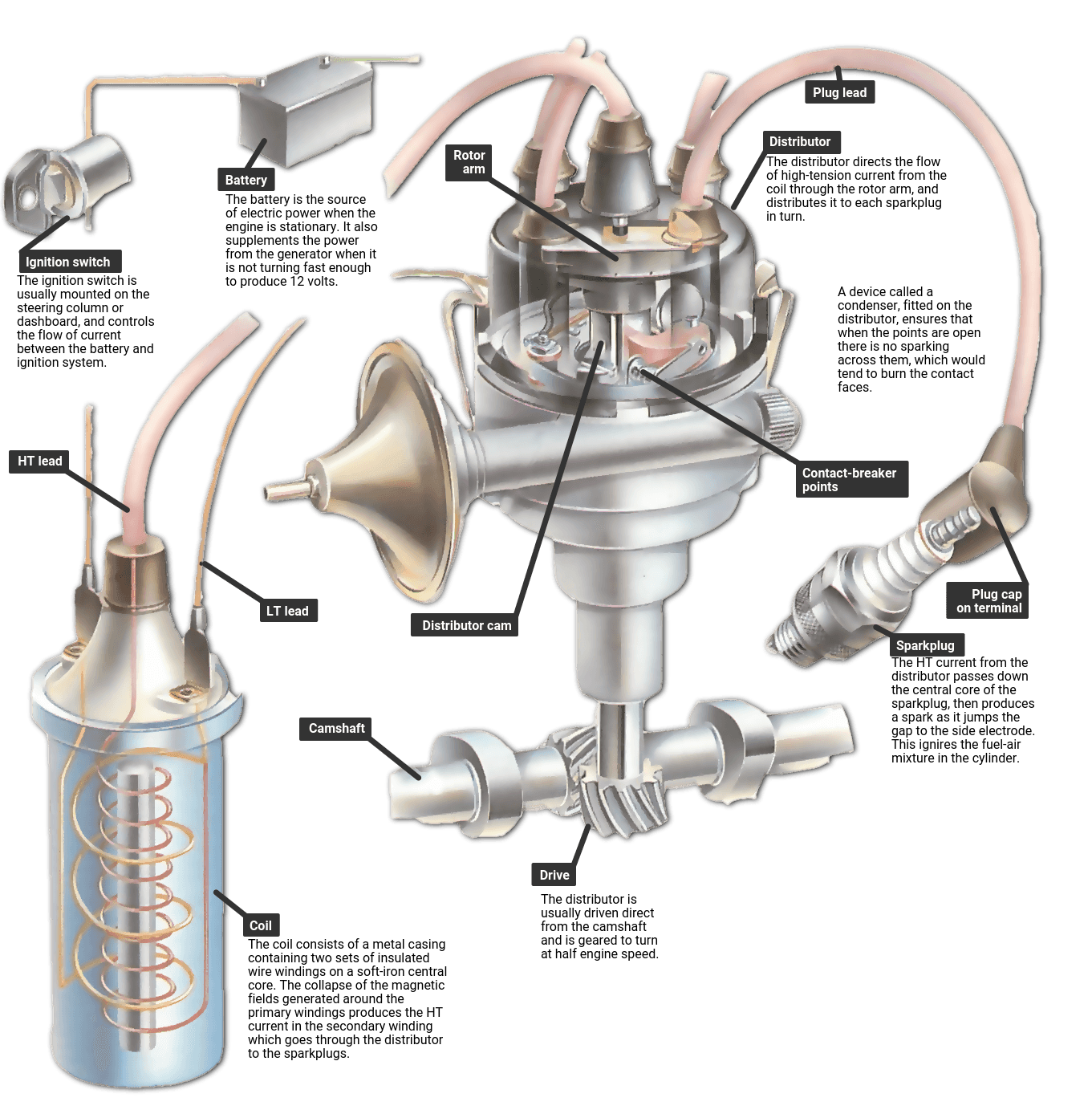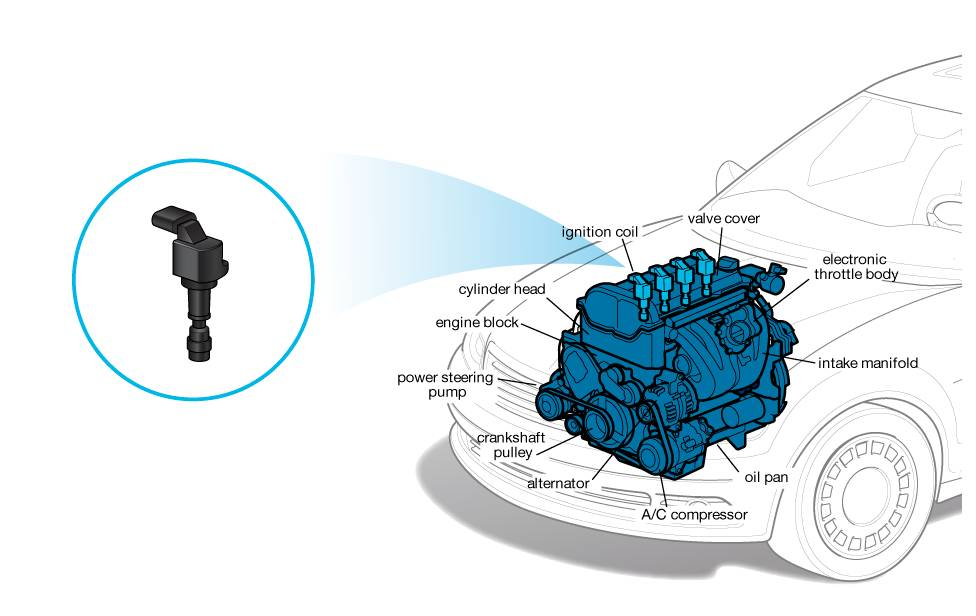Mastering Your Car's Ignition Coil: The Spark of Power

by AutoExpert | 8 April, 2024
Think of your car's engine. It needs a good spark to burn the fuel, right? But your car battery is wimpy. That's where the ignition coil steps in – it's basically a little power booster that zaps those spark plugs with thousands of volts. One for each cylinder, usually.
Okay, How's That Work?
It's kinda like those old science experiments with magnets and wires. The coil's got two sets of wires wrapped around an iron thingie. Battery power goes in one side, turns that iron into a magnet, and BAM – the other coil gets a huge jolt of electricity that goes to your spark plug.

Old-school cars just had ONE big coil and this thing called a distributor that sent the zaps where they needed to go. But those got outta whack easily. Now, most cars have a little coil sitting right on top of each spark plug. Way more reliable.
Why Does This Matter?
Coils can go bad over time. If one's failing, your engine basically loses a cylinder. Feels rough, loses power, your gas mileage tanks... and bad news, that can mess up your engine long-term.

How Do You Know It's the Coil?
Usually, your check engine light comes on. Shops have scanners that tell 'em which cylinder's misfiring. It MIGHT also be the spark plug itself, or some other electrical gremlin.
Fixing It: Worth Doing Yourself?
Depends. The coils themselves are pricey, but they're usually right there on top of the engine. If you can use a wrench, it might not be so bad. Plugs are trickier to get to. If you're not comfy with this stuff, a shop's the way to go, but that bill can get ugly fast.

Fun Fact: The whole idea of how coils work was figured out way back in the 1800s. This dude Faraday was messing around with magnets, and boom, figured out the basics of how power plants work, too!

















